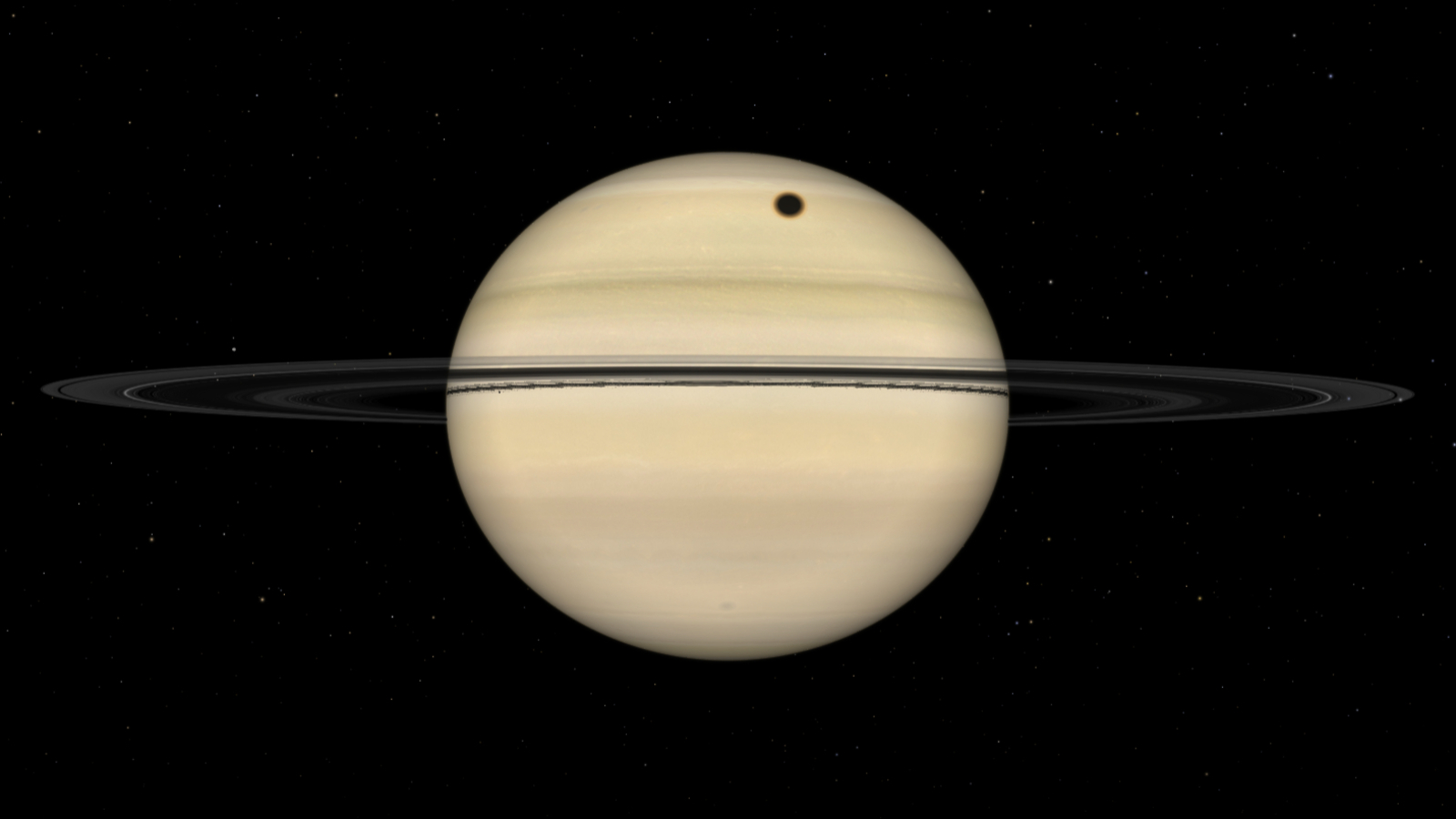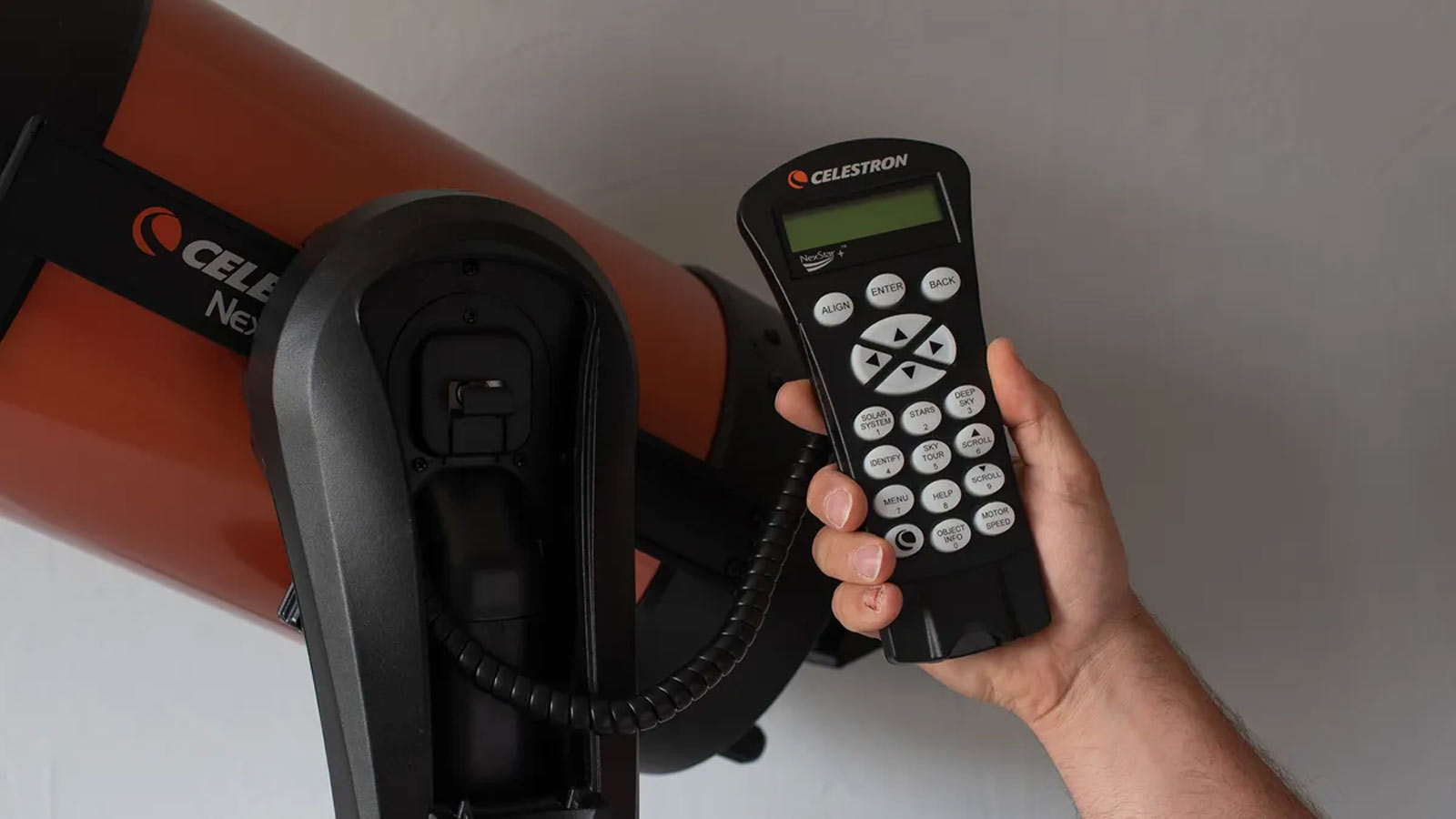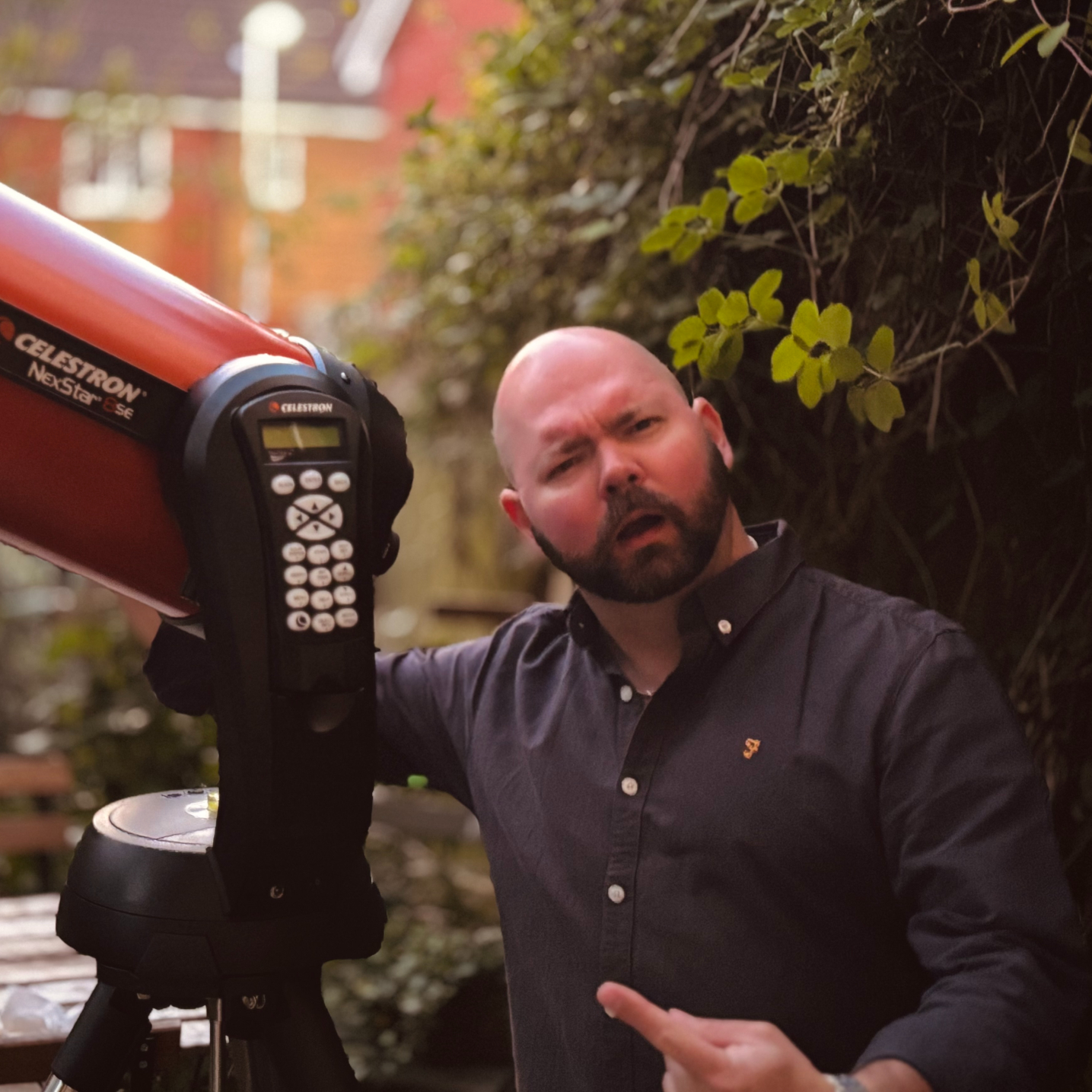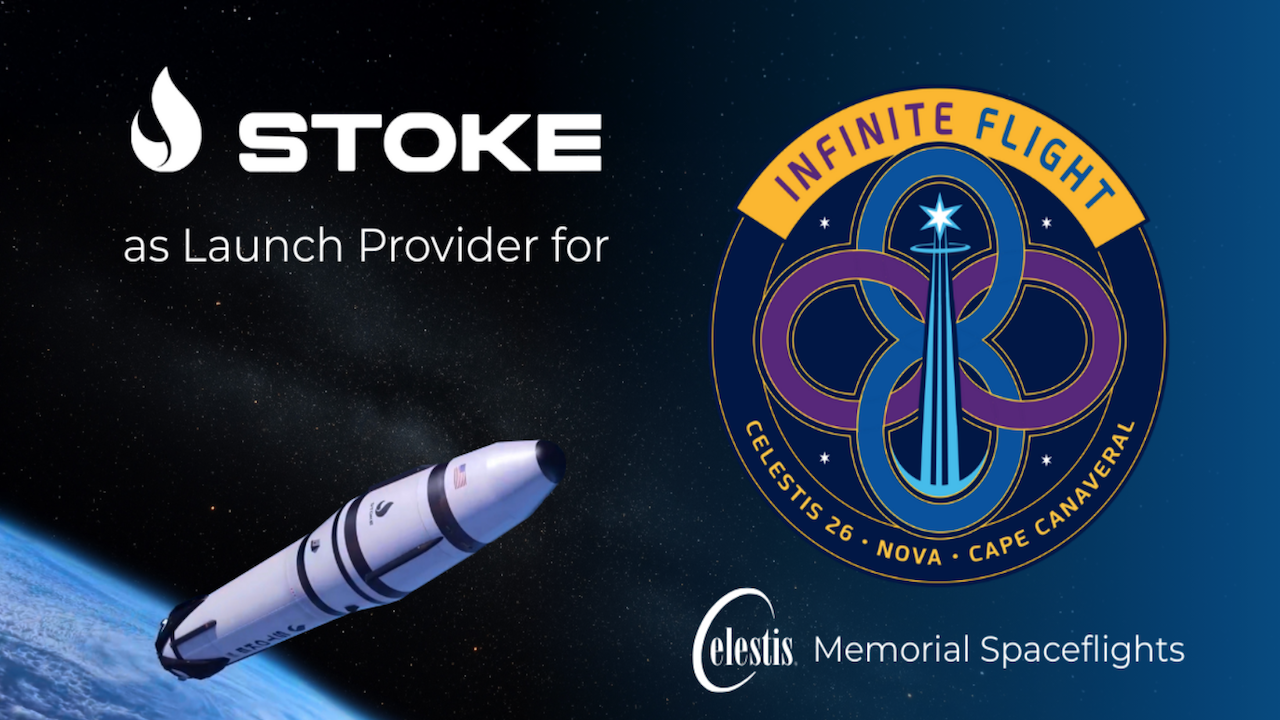Titan darkens Saturn in rare shadow transit on Aug. 19: Here's how to see it
The second largest moon in the solar system will cast its shadow over Saturn on Aug. 19.

Grab your telescope and aim it at Saturn in the early morning hours of Aug. 19 to see Titan's colossal shadow sweep across the majestic gas giant's cloud tops.

Want to see Titan streak across Saturn? The Celestron NexStar 8SE is ideal for beginners wanting quality, reliable and quick views of celestial objects. For a more in-depth look at our Celestron NexStar 8SE review.
This rare shadow transit is visible during a few brief windows every 15 years, when Saturn's rings are aligned edge-on with Earth. During this time, the orbital plane of Saturn's largest moon, Titan, is well aligned to cast its mighty shadow over the gas giant's cloud tops.
Each Titan shadow transit is separated by a period of 16 days, equal to the amount of time that it takes for the moon to complete a full lap of its parent planet. The next transit begins at 1:52 a.m. ET (0552 GMT) on Aug. 19. From there, the moon's shadow takes a little over four hours to sweep across Saturn's disk, according Sky & Telescope.
Saturn can be found shining around 40 degrees above the southeastern horizon as the transit kicks off on Aug. 19. For reference, the width of your clenched fist held at arms length accounts for roughly 10 degrees in the night sky.
At that time, the gas giant will be approximately 807 million miles(1.3 billion kilometers) from Earth, rendering the event invisible to both the naked eye and binoculars alike. However, an 8-inch telescope at 200x magnification should provide a clear view of Titan's shadow on Saturn's surface, according to Hayden Planetarium instructor and lecturer Joe Rao. It may also be possible to track the transit using a smaller 4-inch scope, though this would be challenging even under excellent atmospheric conditions.
Date | Start | End |
Aug 3 | 2:25 a.m. | 7:04 a.m. |
Aug 19 | 1:52 a.m. | 6:00 a.m. |
Sept 4 | 1:25 a.m. | 4:50 a.m. |
Sept 20 | 1:09 a.m. | 3:34 a.m. |
Oct 6 | 1:32 a.m. | Row 5 - Cell 2 |
Once Titan's shadow exits Saturn's disk after Oct. 6, the next opportunity won't come until this alignment recurs, likely in the mid-2040s.
Editor's Note: If you capture an image of Titan's shadow on Saturn and want to share it with Space.com's readers, then please send your photo(s), name, comments and the time/location of the shoot to spacephotos@space.com.
Breaking space news, the latest updates on rocket launches, skywatching events and more!

Anthony Wood joined Space.com in April 2025 after contributing articles to outlets including IGN, New Atlas and Gizmodo. He has a passion for the night sky, science, Hideo Kojima, and human space exploration, and can’t wait for the day when astronauts once again set foot on the moon.
You must confirm your public display name before commenting
Please logout and then login again, you will then be prompted to enter your display name.

